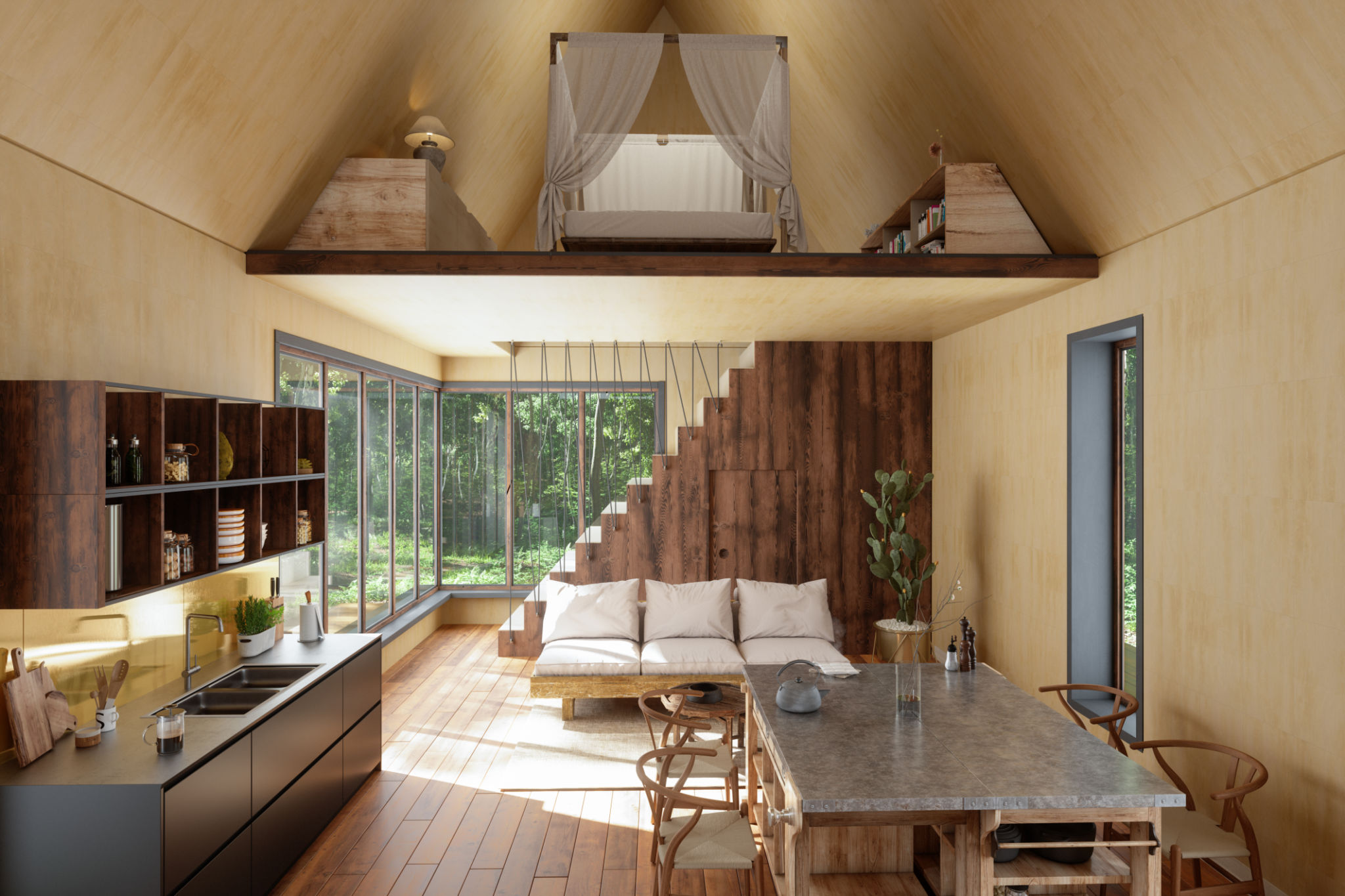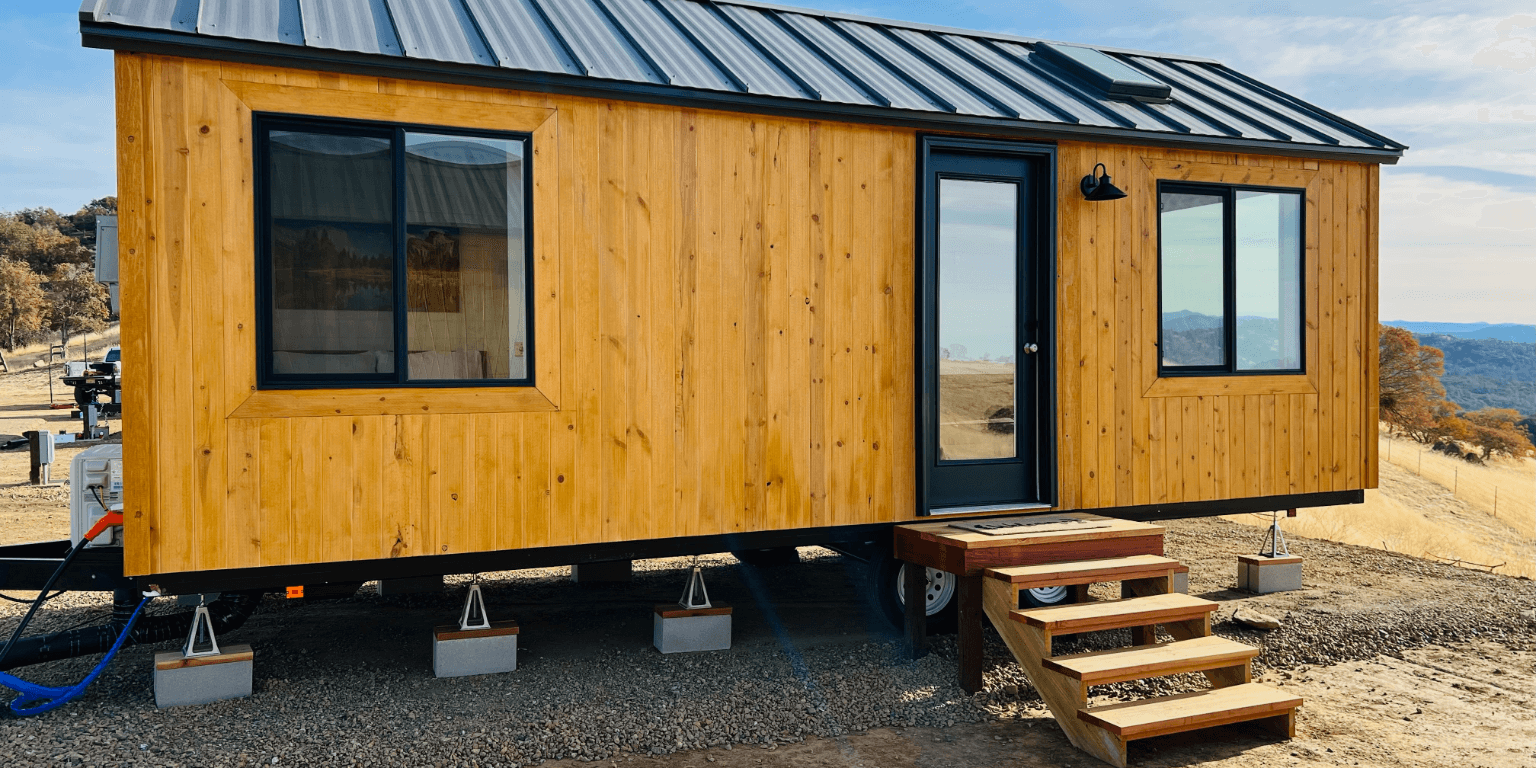The Downsides of Tiny Homes
So, you’re thinking about tiny house living? Maybe you’ve watched the HGTV shows, scrolled through Pinterest-perfect porches, or pictured yourself in a cozy loft bed with fairy lights glowing above. It’s a vibe.
But before you go all-in, let’s get real. Tiny homes are creative, affordable, and exciting—but they come with quirks you don’t always see on TV. Don’t get me wrong, I love the movement and think it’s reshaping how we think about housing. But living in 200–400 square feet isn’t always as dreamy as the Instagram pictures.
Here’s the honest truth about what can make life in a tiny house… well, tiny.
Clutter Happens Fast (and Cleaning Never Stops)
The number one reality check? Tiny homes get messy in record time. Sure, you can sweep the floor in two minutes—but one pile of laundry, one muddy dog paw, or one spilled bowl of cereal can make the whole place feel like a disaster zone.
If you’re a bulk shopper or a hobbyist, storage becomes a daily battle. Forget Costco hauls, massive wardrobes, or stockpiling 12 frozen pizzas. Closets are narrow, kitchens have limited cabinets, and pantries barely exist. Many tiny homeowners learn to “live light,” which is freeing—but also means giving up meal prepping for weeks at a time or rotating seasonal clothes out to storage.
Living tiny demands a mindset shift: less “buy now, store later” and more “what do I actually use today?”

Lofts Look Cute, But…
Lofts are iconic in tiny home design. They make great use of vertical space, and they photograph beautifully. But let’s talk reality: climbing into a loft bed every night is not always fun.
The ceilings are low—sometimes 40 inches—so you’re crawling into bed, not strolling. Making the bed? Basically an Olympic sport. Add in kids, pets, or mobility issues, and suddenly that charming loft becomes more of a daily headache.
Some builders now design main-floor bedrooms or Murphy bed setups to avoid this issue, but it’s something every buyer needs to think about before committing.
Appliances and Comforts You’ll Miss
If you’re dreaming of a full kitchen with granite counters, a double oven, and a farmhouse sink—slow down. Tiny homes rarely fit full-size appliances. Expect compact fridges, single-drawer dishwashers, and scaled-down stovetops. Bathtubs are often replaced with small showers, and laundry might mean a two-in-one washer/dryer combo (if you can fit one at all).
Multi-use furniture and space-saving gadgets become part of daily life. That’s not a bad thing—it can actually feel pretty smart—but it’s a big adjustment if you’re used to spreading out in a bigger home.

Hosting Guests can be... Awkward
Let’s face it: tiny homes aren’t made for entertaining. Two to five people inside can feel crowded fast. Dinner parties, overnight guests, and family holiday visits need to be reimagined.
And if you’ve got a composting toilet? Be prepared for some raised eyebrows when guests ask, “So… how does this work?” Tiny living is cozy, but it’s not always guest-friendly.
When Small Spaces Feel Too Small
Here’s something people don’t talk about enough: tiny homes can feel claustrophobic—especially in winter. When you’re stuck indoors for weeks on end, the charm of 250 square feet can wear off quickly.
Add in the fact that smells travel fast (garlic pasta, burnt toast, or last night’s workout clothes), and suddenly your “open concept” space doesn’t feel so inviting. Good ventilation and smart design can help, but some people just struggle with the reality of so little breathing room.

Weight Limits and Design Trade-Offs
If your tiny home is built on a trailer, weight is a serious consideration. Every material—flooring, countertops, furniture—adds up. Marble counters, tile showers, or heavy wooden furniture may not even be an option. Builders have to get creative with lighter materials, which sometimes means sacrificing the finishes you’d find in a traditional home.
It doesn’t mean you can’t have a stylish tiny home—it just means you’ll need to balance looks with practicality.
Parking, Zoning, and Insurance Headaches
This is one of the biggest hidden downsides: where are you actually going to park or place your tiny home?
Zoning laws vary wildly. Some cities, like Portland, are friendly toward tiny homes on wheels. Others won’t even recognize them as legal residences. Permits, insurance, and land costs can add thousands to your budget—and without the right approvals, you could find yourself fighting city hall.
A good builder or consultant can help you navigate this maze, but it’s a reality check for anyone thinking of just “plopping” their house wherever.
People Will Judge You
It’s true. Living tiny is still outside the norm. Some people will cheer you on for living simply, while others might think you’re nuts. Friends might joke about your “dollhouse,” family members might worry you’ve gone off-grid, and strangers online will definitely have opinions.
You’ll need a thick skin—but you’ll also join a passionate community of tiny house enthusiasts who get it.
So… Why Do It Anyway?
After reading through all the downsides, you might be wondering: why on earth would anyone actually choose to live in a tiny home? Here’s the thing—despite the quirks, the benefits can be life-changing.
1. Lower Costs = Real Financial Freedom
The average U.S. home price hovers around $396,000, while most tiny homes cost between $30K–$80K. That’s not just a small difference—it’s a life-altering one. Without a crushing mortgage, many tiny home owners report feeling like they finally breathe again. Some people even manage to live mortgage-free, which means money can go toward travel, retirement, investments, or simply enjoying life instead of sending it all to the bank.
2. Smaller Utility Bills = Big Monthly Savings
Heating, cooling, water, and electricity costs are a fraction of what they’d be in a full-sized home. Tiny homes use up to 80% less energy than traditional houses. Imagine slashing your monthly bills from $2,000 down to $500 or less. That’s like giving yourself a permanent raise without working more hours.
3. Freedom to Move and Explore
Unlike a traditional house that roots you in one spot, tiny homes (especially on wheels) let you change scenery whenever you feel like it. Want to live by the mountains one season and near the beach the next? You can. Even if you don’t plan to move often, just having the option creates a sense of freedom that a fixed house can’t.
4. A Smaller Footprint—For You and the Planet
Tiny homes aren’t just good for your wallet; they’re good for the environment. With less square footage to heat, cool, and fill with “stuff,” your lifestyle naturally shifts greener. In fact, some studies show tiny homes use 7 times less energy than the average house. For eco-conscious folks, this is a no-brainer.
5. More Focus on What Really Matters
Here’s the part that surprises people most: tiny living isn’t about giving things up—it’s about gaining clarity. With less clutter and fewer distractions, you naturally spend more time on relationships, hobbies, experiences, and personal growth. You stop buying things just to fill space and start investing in things that actually matter to you.
6. Creative Living at Its Best
Tiny homes push you to think outside the box. Hidden storage under stairs, multi-purpose furniture, and smart layouts make every inch work harder. It’s like living inside an IKEA showroom—but customized exactly for your needs. For some, this creativity is the fun of it all.
7. Not Just a Lifestyle—An Investment
And here’s the kicker: tiny homes aren’t just about living smaller. They’re becoming one of the smartest real estate plays out there. Rent one out as an Airbnb or VRBO, and the ROI often beats traditional rentals hands-down. Or, if it’s built to code and dropped onto a foundation, it can even appreciate in value like a normal home. Developers, investors, and families alike are catching on to this, and the demand keeps growing.
Bottom line: Tiny living isn’t about perfection—it’s about freedom, creativity, and designing a life that actually works for you. Yes, there are challenges. But the rewards—financial, emotional, and environmental—are massive. For many, the trade-offs aren’t just worth it… they’re the whole point.

👉 Want to explore whether tiny living is right for you? Cocoon Homes helps you design, build, or invest in a tiny home that avoids the common pitfalls and maximizes the upside. Let’s make your dream small space a big win.
